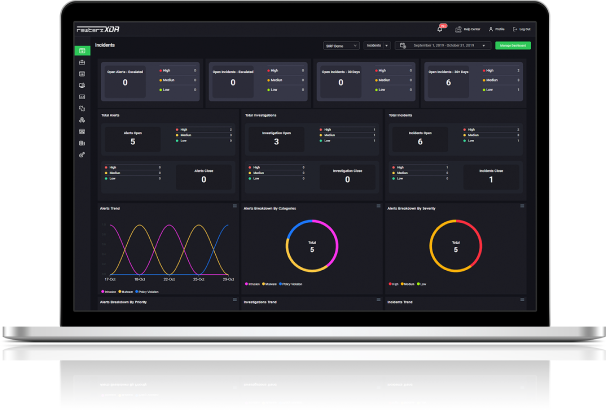

Rewterz Threat Advisory – ICS: Multiple Rockwell Automation ThinManager ThinServer Vulnerabilities
August 23, 2023
Rewterz Threat Update – Akira Ransomware Exploits Cisco VPNs For Corporate Breaches
August 23, 2023
Rewterz Threat Advisory – ICS: Multiple Rockwell Automation ThinManager ThinServer Vulnerabilities
August 23, 2023
Rewterz Threat Update – Akira Ransomware Exploits Cisco VPNs For Corporate Breaches
August 23, 2023Severity
High
Analysis Summary
LockBit ransomware takes as little as five minutes to deploy the encryption routine on target systems once it lands on the victim network. LockBit attacks leave few traces for forensic analysis as the malware loads into the system memory, with logs and supporting files removed upon execution. In one case, researchers found that the attack began from a compromised Internet Information Server that launched a remote PowerShell script calling another script embedded in a remote Google Sheets document. This script connects to a command and control server to retrieve and install a PowerShell module for adding a backdoor and establishing persistence. To evade monitoring and go unnoticed in the logs, the attacker renamed copies of PowerShell and the binary for running Microsoft HTML Applications (mshta.exe); this prompted Sophos to call this a “PS Rename“ attack. The backdoor is responsible for installing attack modules and executes a VBScript that downloads and executes a second backdoor on systems restart.
LockBit strives to target different sectors throughout the world and has just rebranded for the second time. Operators and affiliates behind the LockBit ransomware started transitioning to LockBit 3.0 around June 2022. LockBit 3.0, also known as LockBit Black, is active and out there, and the BFSI Sector makes up 1/3rd of its victims. This latest LockBit version has a new extortion model that allows them to purchase stolen data during attacks. Rapid affiliate adoption of LockBit 3.0 has resulted in a large number of victims being identified on the new “Version 3.0” leak sites, a collection of public blogs that identify non-compliant victims and release extracted data.
In September 2022, researchers discovered that LockBit 3.0 ransomware is being delivered in Word document format while masquerading as job application emails in NSIS format.
It was recently discovered that LockBit 2.0 and LockBit 3.0 are being distributed once more with merely a filename change. The latest versions are being delivered using phishing emails that seem like job applications, compared to earlier examples where word files or emails with copyright claims were utilized.
LockBit has recently been distributed without restriction to version or identical filename.
Therefore, users must examine the file extensions of document files, update apps and V3 to the newest version, and be very cautious when opening files from unidentified sources.
ransom note:

Impact
- Sensitive File Theft
- File Encryption
Indicators of Compromise
MD5
- c980f9096db0bab112949b905aca32c3
- 668f993691ed137db85ad95419a4afe5
SHA-256
- 2cf7134a1bfb6d8feee22952bdc8823042de15caebab8b0dbcc73b40ae3f6ae5
- 49860038322ca135ae92b657a48097f7dc223327081e1c8543b72f50de911a33
SHA-1
- 096c289ed93c48c9ef4bafcc4e37bf1eb91252c1
- e1b91fa675e71a19a47792e75308d7f687209431
Remediation
- Block all threat indicators at your respective controls.
- Search for Indicators of compromise (IOCs) in your environment utilizing your respective security controls
- Maintain cyber hygiene by updating your anti-virus software and implementing a patch management lifecycle.
- Maintain Offline Backups – In a ransomware attack, the adversary will often delete or encrypt backups if they have access to them. That’s why it’s important to keep offline (preferably off-site), encrypted backups of data and test them regularly.
- Never trust or open links and attachments received from unknown sources/senders.
- Enable antivirus and anti-malware software and update signature definitions in a timely manner. Using multi-layered protection is necessary to secure vulnerable assets








